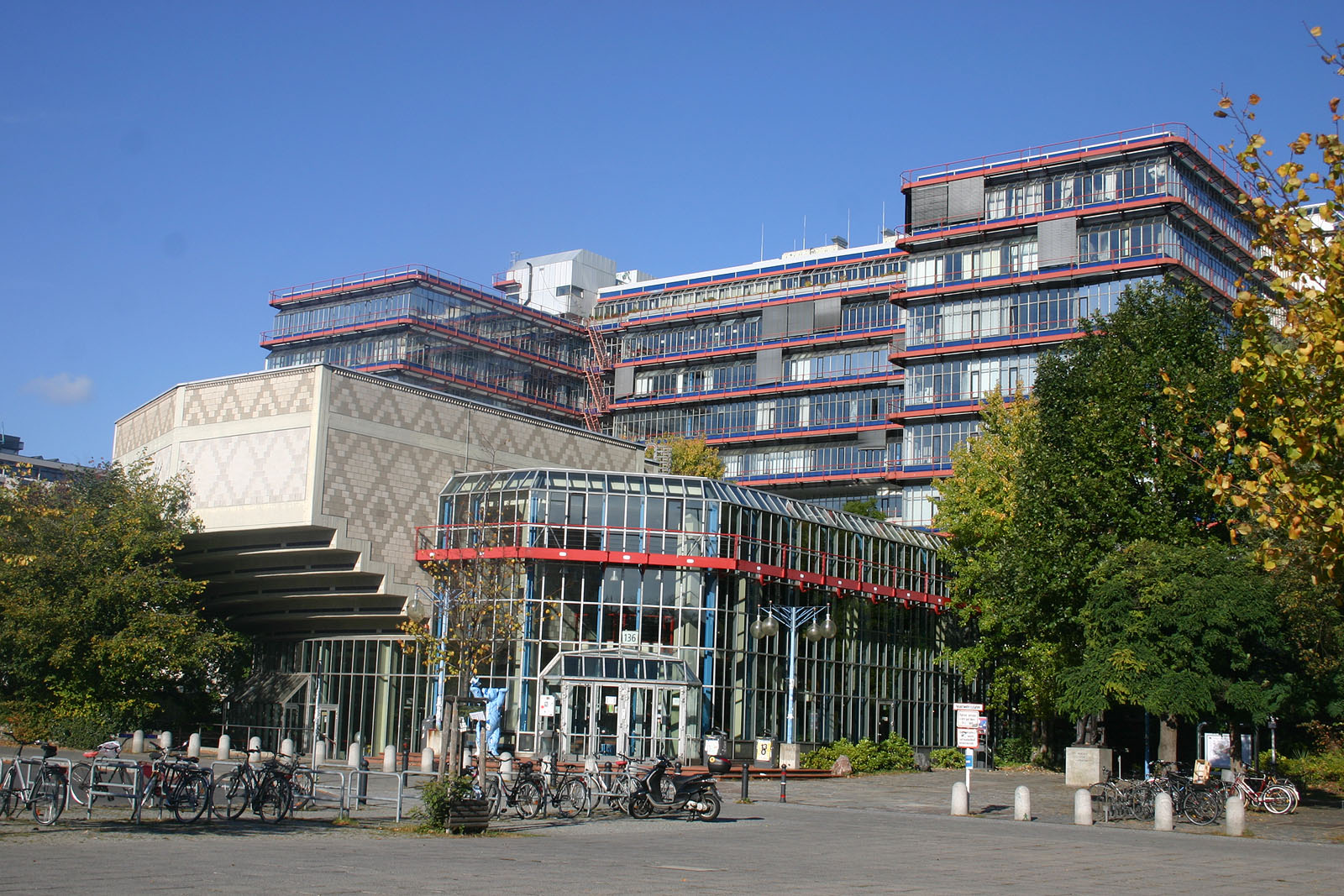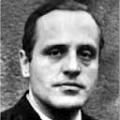



معرفی دانشگاه صنعتی برلین
دانشگاه صنعتی برلین ( Technische Universität Berlin) یا دانشگاه (TU Berlin) یکی از چهار دانشگاه شهربرلین میباشد. این دانشگاه در سال ۱۸۸۴ طبق نقشههای Richard Lucae ساخته شد. حدود 34000 دانشجو در این دانشگاه مشغول تحصیل میباشند. با اختصاص دادن حدود %20 ظرفیت دانشگاه به دانشجویان خارجی، پذیرش بینالمللی دانشجوی آن در میان دانشگاه های آلمان از همه بیشتر میباشد. هیات علمی دانشگاه دارای 8 عضو برنده ی جایزه نوبل میباشد.دانشگاه TU Berlin، «عضو شبکهی مدیران برتر صنعتی اروپا» (Top Industrial Managers For Europe) که اجازهی تبادل دانشجو میان دانشگاههای مهندسی اروپایی، توسط این مؤسسه صادر میشود، میباشد. این دانشگاه همچنین عضو «کنفرانس دانشگاههای اروپایی برای تحقیقات و آموزش مهندسی پیشرفته» میباشد.
دانشگاه صنعتی برلین در یک نگاه
|
شعار : We have the ideas for the future ما ایدههایی برای آینده داریم نوع دانشگاه : عمومی سال تاسیس : 1879 بودجه : 535.5 میلیون پوند مکان : برلین , آلمان |
 |
|
تعداد اعضای هیات علمی : 3,120 تعداد کارکنان : 2,258 تعداد دانشجویان : 34,428 |
وبسایت : www.tu-berlin.de |
رتبه بندی
| نظام رتبه بندی | رتبه |
| ARWU | 301-400 |
| Times | 82 |
| QS | 164 |
دانشکده ها
دانشکده I
موسسه تاریخ هنر و شهرسازی تاریخی
موسسه آموزش
موسسه زبان و ارتباط
موسسه مطالعات آموزش و اشتغال فنی و حرفه ای
مرکز تحقیقات یهودستیزی
مرکز مطالعات جنسیتی
دانشکده II - ریاضیات و علوم طبیعی
موسسه شیمی
موسسه ریاضیات
موسسات فیزیکی
موسسه حالت جامد فیزیک
موسسه اپتیک و فیزیک اتمی
موسسه فیزیک نظری
مرکز نجوم و فیزیک نجومی
دانشکده III - علوم و مهندسی فرآیند
موسسه بیوتکنولوژی
موسسه مهندسی انرژی
موسسه فن آوری غذایی و شیمی مواد غذایی
موسسه فرآیند و روش های مهندسی
موسسه فن آوری زیست محیطی
موسسه علم مواد
دانشکده IV - مهندسی برق و علوم کامپیوتر
موسسه انرژی پایان مهندسی اتوماسیون
موسسه فرکانس بالا و تکنولوژی سیستم های نیمه هادی
موسسه سیستم های مخابراتی
موسسه مهندسی کامپیوتر و میکرو الکترونیک
موسسه مهندسی نرم افزار و علوم کامپیوتر نظری
موسسه انفورماتیک کسب و کار و روش های کمی
دانشکده V - سیستم های مهندسی مکانیک و حمل و نقل
موسسه مکانیک سیالات و آکوستیک
موسسه روانشناسی و انسان عوامل و ارگونومی
موسسه حمل و نقل سطح (زمین- UND Seeverkehr)
موسسه هوا و فضا
موسسه ساخت و ساز، میکروتکنولوژی و مهندسی پزشکی
موسسه ماشین آلات و مدیریت کارخانه
موسسه مهندسی مکانیک
دانشکده VI - برنامه ریزی - ساختمان - محیط زیست (ادغام دانشکده سابق "مهندسی عمران و علوم کاربردی" و "معماری - محیط زیست - جامعه")
موسسه معماری
موسسه مهندسی عمران
موسسه علوم کاربردی
موسسه علم مساحی و داده های جغرافیایی و فن آوری اطلاعات (Geoinformationstechnik)
موسسه معماری منظر و برنامه ریزی محیطی
موسسه بوم شناسی
موسسه جامعه شناسی
موسسه برنامه ریزی شهری و منطقه ای
دانشکده VII - اقتصاد و مدیریت
موسسه فن آوری و مدیریت
موسسه مدیریت کسب و کار
موسسه اقتصاد و قانون کسب و کار
مدارک مورد نیاز برای اخذ پذیرش
: TOEFLIBT (آزمون اینترنتی) ، حداقل نمره = 90
PBT (آزمون برگه ای) حداقل نمره = 577
حداقل نمره 7 در آزمون IELTS آکادمیک
ددلاین
Winter Semester
| Oct. 01, 2017 - March 30, 2018 | Dates of the semester |
| Oct. 16, 2017 - Feb. 18, 2016 No lectures: Dec. 27, 2017 - Jan. 06, 2018 |
Lecture period |
| by July 24, 2017 | Reregistration Deadline for winter semester 2017/2018 |
| by Nov. 13, 2016 | Application deadline for a semester on leave for winter semester 2017/2018 |
برای مشاهده تمامی ددلاین ها به این لینک مراجعه نمایید.
مشاهیر دانشگاهصنعتی برلین
 |
_36.jpg?1497805620695) |
_37.jpg?1497805667511) |
_34.jpg?1497805716772) |
_38.jpg?1497805755748) |
| Fritz Haber was a German chemist who received the Nobel Prize in Chemistry in 1918 for his invention of the Haber–Bosch process, a method used in industry to synthesize ammonia from nitrogen gas and hydrogen gas. | Wernher Magnus Maximilian Freiherr von Braun was a German, later American, aerospace engineer and space architect credited with inventing the V-2 rocket for Nazi Germany and the Saturn V for the United States. | Wolfgang Paul was a German physicist, who co-developed the non-magnetic quadrupole mass filter which laid the foundation for what is now called an ion trap. | Konrad Zuse was a German civil engineer, inventor and computer pioneer. His greatest achievement was the world's first programmable computer; the functional program-controlled Turing-complete Z3 became operational in May 1941. | Carl Bosch was a German chemist and engineer and Nobel laureate in chemistry. He was a pioneer in the field of high-pressure industrial chemistry and founder of IG Farben, at one point the world's largest chemical company. |
_35.jpg?1497805801485) |
_35.jpg?1497805844749) |
_34.jpg?1497805887553) |
_36.jpg?1497805932138) |
 |
| Berthold Konrad Hermann Albert Speer was a German architect who was, for most of World War II, Reich Minister of Armaments and War Production for Nazi Germany. Speer was Adolf Hitler's chief architect before assuming ministerial office. | Ida Noddack, née Ida Tacke, was a German chemist and physicist. She was the first to mention the idea of nuclear fission in 1934. With her husband Walter Noddack she discovered element 75, rhenium. | Arthur Louis Hugo Rudolph was a German Nazi rocket engineer who was a leader of the effort to develop the V-2 rocket for Nazi Germany. | Friedrich Georg "Fritz" Houtermans was a Dutch-Austrian-German atomic and nuclear physicist born in Zoppot near Danzig, West Prussia to a Dutch father, who was a wealthy banker. | Klaus Riedel was a German rocket pioneer. He was involved in many early liquid-fuelled rocket experiments, and eventually worked on the V-2 missile programme at Peenemünde Army Research Center. |
_10.jpg?1497806198212) |
_11.jpg?1497806249005) |
_5.jpg?1497806335203) |
_5.jpg?1497806393372) |
_7.jpg?1497806478701) |
| Dennis Gabor CBE, FRS was a Hungarian-British electrical engineer and physicist, most notable for inventing holography, for which he later received the 1971 Nobel Prize in Physics. | Henri Marie Coandă was a Romanian inventor, aerodynamics pioneer, and builder of an experimental aircraft, the Coandă-1910 described by Coandă in the mid-1950s as the world's first jet, a controversial claim disputed by some and supported by others. | Major-General Dr Walter Robert Dornberger was a German Army artillery officer whose career spanned World Wars I and II. He was a leader of Nazi Germany's V-2 rocket program and other projects at the Peenemünde Army Research Center. | Wilhelm Cauer was a German mathematician and scientist. He is most noted for his work on the analysis and synthesis of electrical filters and his work marked the beginning of the field of network synthesis. | Ernst August Friedrich Ruska was a German physicist who won the Nobel Prize in Physics in 1986 for his work in electron optics, including the design of the first electron microscope. |